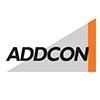Explore all the information on
Sow feeding management
An essential part of any strategy to optimize sow reproductive performance, increase efficiency of feed usage and lower culling rate, is to control weight and backfat gain during gestation and weight and backfat loss in lactation. This is best achieved by individually feeding each sow a well balanced diet, and basing daily feed allowances according to an estimate of sow bodyweight and backfat thickness.
A well-designed feeding program can help meet operational goals for sow farm efficiency and profit by minimizing feed waste and maximizing sow productivity. An effective sow feeding program starts with breeding gilts within the right window of weight and feeding them according to recommendations during their first gestation. This can help maximize the number of sows in ideal condition at first farrowing.
Additionally, knowing and maintaining an ideal sow body condition score is a key strategic area for long-term success. The body condition of sows in the barn is closely related to the profitability of the sow farm because it impacts sow longevity and reproductive performance. Keeping sows in the ideal body condition – not too fat and not too thin – is essential. A successful feeding program includes recording data and linking body condition to feeding so you can correctly adjust each sow’s feed ration.
Comments related to #Sow feeding management
Featured users in Sow feeding management

Fernando Bortolozzo  Universidad Federal Do Rio Grande do Sul UFRGS
Universidad Federal Do Rio Grande do Sul UFRGS

Médico Veterinário / Profesor UFRGS
Brazil
Brazil
Top 10 content about #Sow feeding management


























